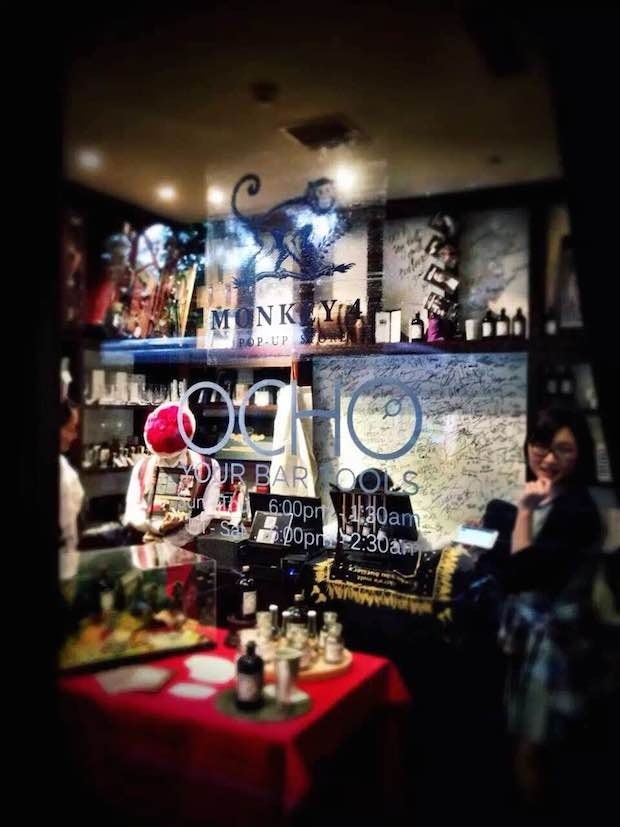
Unusually shaped glass bottles, slick interior design, and copper equipment—no, it's not another hip craft brewpub or speakeasy in Brooklyn, but a rather different experiment undertaken by one local cocktail aficionado—in Beijing.
The Distillery, a new bar in Beijing which showcases cocktails made with mother's ruin, appears to prove that the boutique gin trend sweeping the globe has not skipped China. While The Distillery's opening has more or less coincided with niche gins from the likes of Oregon and Philadelphia landing in China's first-tier cities, the bar itself offers samplers from super-premium brands that have already been in the country for a few years. It's a scene that would excite even the casual gin enthusiast. Yet there's one problem, at least according to The Distillery co-founder Bill Isler—his target consumers are not the growing Chinese middle class. At least not yet.
Although gin has been available in China for over two decades, many Chinese consumers still have difficulty differentiating between white spirits in a nation that has been swept up by a whisky and Cognac craze. It's an issue that has kept most craft gins, which make up only a small fraction of the less than 1 percent share of the spirits market that imported products have in China, confined to the elite hotels and high-end cocktail bars.

Still, importers and distillers are confident. Last year, International Wine and Spirits predicted super-premium gin sales in China would reach 45,000 bottles this year, after consistent gains over the past five years. William Grant-owned Hendrick's, which has already seen steady sales growth in China, expects to contribute to 40 percent of these sales. In another example of success, Monkey 47, the most expensive brand on the Chinese market at 550 RMB a bottle, became the first of its category to be stocked at premium supermarkets in Shanghai earlier this year, according to Victor Mirzencu, general manager of importing company Eco Global Group. This month, the “rule-breaker” dry gin with roots in Germany's Black Forest became available at stores in 19 other Chinese cities, including Beijing.
Then there are importing companies like Shanghai-based Gotham East that, for the past two years, have brought in a range of craft gins, from traditional varieties like The London Distillery Company's Dodd's, to the more modern and innovative blends like grape-based G'Vine. Gotham East co-founder Harold Broese van Groenou said his company recognized Chinese consumers' demand for higher-quality spirits, and they also expect issues like food safety to open a market for craft products. Food safety concerns have already catalyzed an organic dining movement that is gaining momentum across China.
Producers at all levels are educating bartenders to better reach the uninformed consumer. Monkey 47 does master classes. New-to-the-scene Australian small-batch brand Four Pillars host frequent tastings. But while education is key, it is by no means the end of the road. Gin importers are also having to adapt their products to the Chinese market, and in some cases, that means tweaking ingredients.
Traditional dry gins that feature juniper as the predominant flavor can be too alien to a Chinese consumer with no experience with the spirit, which is where the more modern, “experimental” gins with softer flavor profiles have a chance to do well on the market, acting as gateway products to untrained palates, according to Broese van Groenou. He and his partners at Gotham East are also inviting Chinese bartenders to work with them in creating a new gin that will incorporate Chinese botanicals.

“This will give Chinese consumers something that they can relate to in a more direct way and will hopefully help in growing interest in gin and its history,” Broese van Groenou said.
In some cases, packaging and design can send a stronger message. “With premium gin being a new category in China, the majority of consumers don't have a willingness to know what ingredients are inside,” Mirzencu said. “Monkey 47 tends to win their interest by the exterior. They like the shape of the bottle, they like the color, they like the story, and they like the monkey.”
The gin cocktail ingredient that Mirzencu is counting on to get the Chinese consumer's attention? Tonic water. Eco Global imports the only premium tonic water in China, Thomas Henry from Germany, which bartenders and consumers are taught to pair with Monkey 47 gin. Other heavyweights in the super-premium category rely on their signature gin and tonic recipes to stand out in the Chinese market: a Hendrick's gin and tonic comes with a cucumber garnish, while Diageo-owned Tanqueray No. 10 gin, which is distilled using citrus fruits, is served with a slice grapefruit.
“A Chinese consumer will ask 'Why a slice of grapefruit?' giving us a chance to educate them on our product, and build brand awareness and equity,” Diageo Reserve's brand ambassador Ethan Liu said.
With the gin and tonic being an easy drink to prepare at home, it seems like a no-brainer sell for a younger, trend-hungry generation with a disposable income. For now, though, there is one other thing that still stands in gin's way. That, according to Broese van Groenou, is whisky.
“[Gin] is a more complicated sell–not just driven by age statements on bottles of whisky or ultra-premium brands that are widely recognized,” he said. “Furthermore, none of the large spirits groups are pushing gin in the same way that they market whisky or Cognac, and this is also an obstacle to rapid growth.”